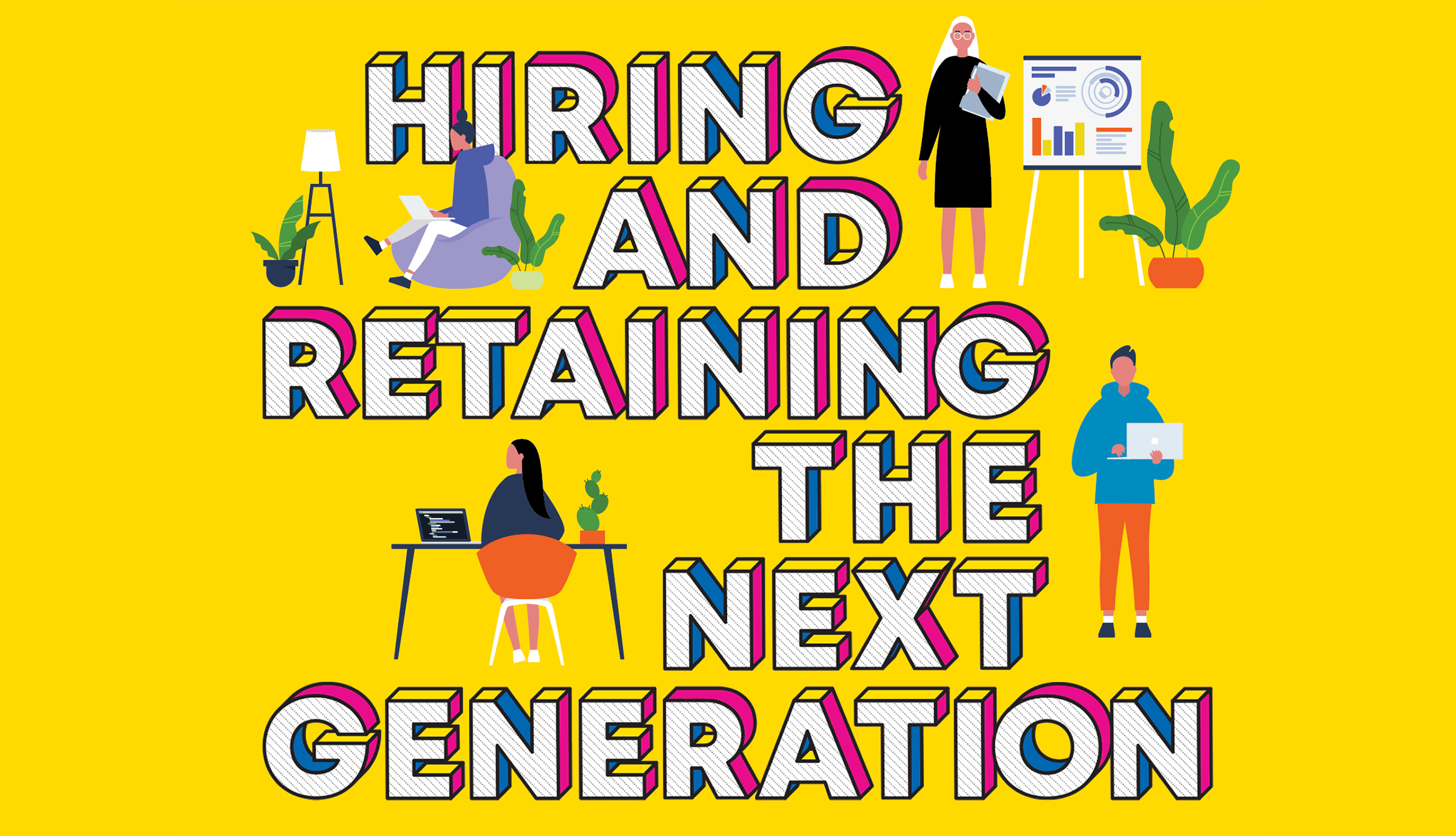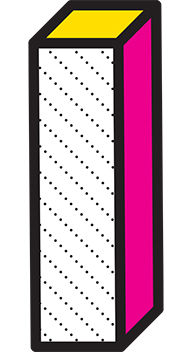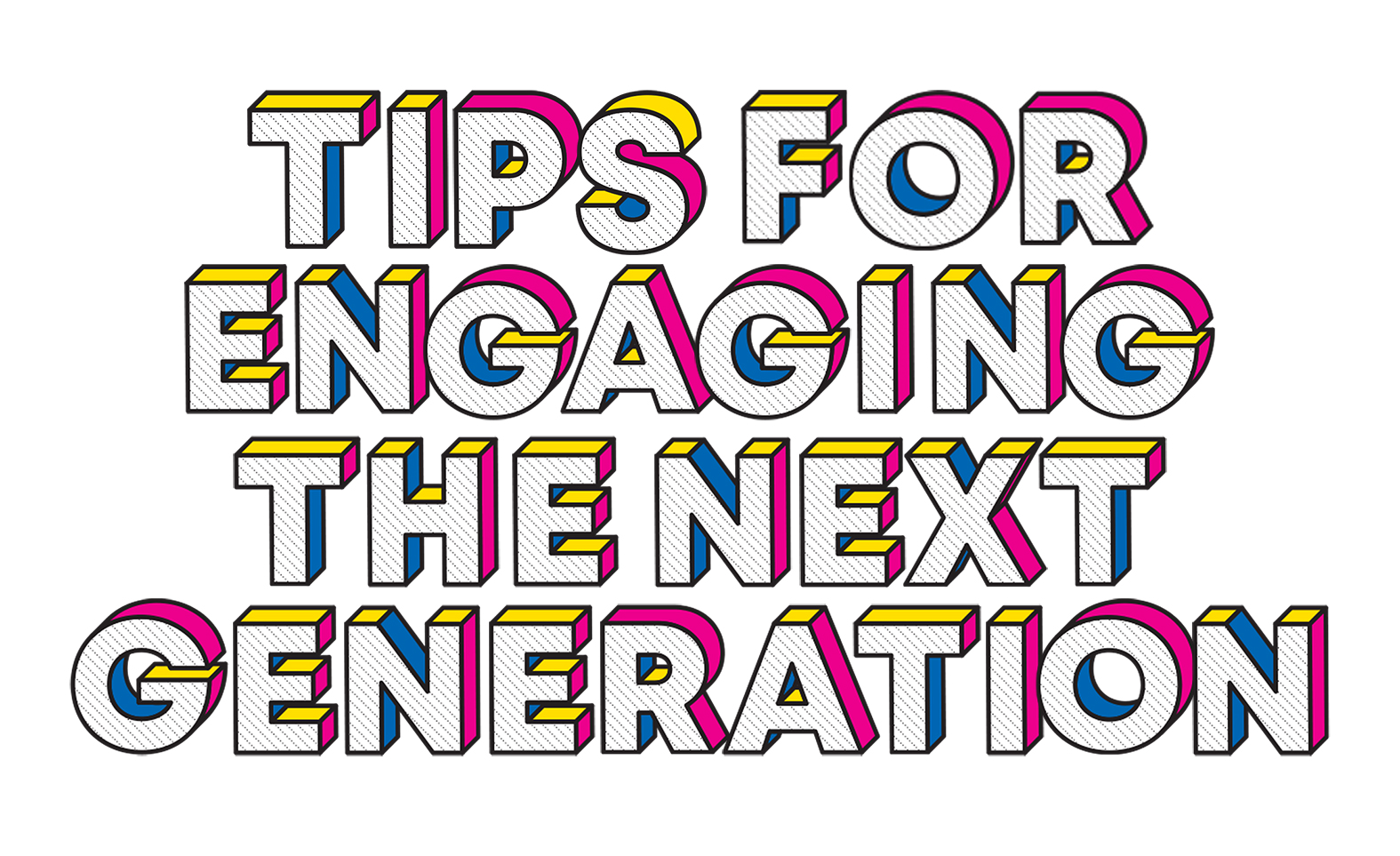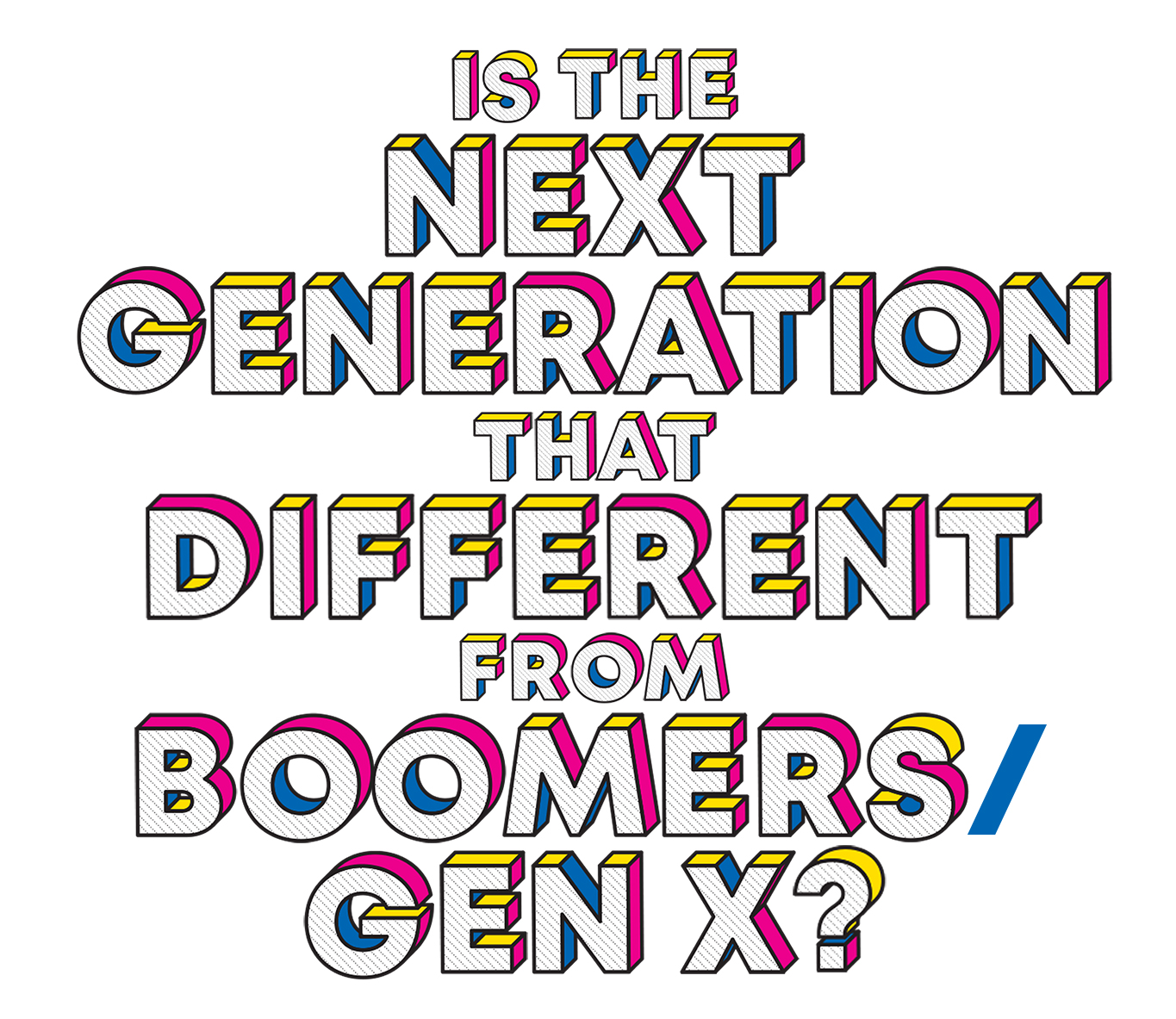
Published
2 years agoon
THE SEEMINGLY EVER-CHANGING
EMPLOYMENT LANDSCAPE REQUIRES
FLEXIBILITY AND INTENTIONALITY.
 OVE OVER MILLENNIALS. Gen Z is the newest age group to begin entering the workforce. Last I checked, “Z” was the final letter in the alphabet. Given we are out of letters, what does this mean for the next generation’s name? Turns out, it’s Generation Alpha. I guess we’re going with Greek letters moving forward, which could mean the naming of generations and COVID variants could be on an awkward crash course.
OVE OVER MILLENNIALS. Gen Z is the newest age group to begin entering the workforce. Last I checked, “Z” was the final letter in the alphabet. Given we are out of letters, what does this mean for the next generation’s name? Turns out, it’s Generation Alpha. I guess we’re going with Greek letters moving forward, which could mean the naming of generations and COVID variants could be on an awkward crash course.
If you’re like me, it’s hard – if not impossible – to hire people today. The combination of the labor shortage and economic growth means you will take Boomers, Gen X, Millennials, or Gen Z – anyone, anyone who is willing to work and contribute. Many experts, much smarter than I, are predicting this labor shortage will be around for years to come. So, what can we do to hire and retain the next generation as well as help fill some of the labor gaps we’re experiencing? Let’s go ahead and define the “Next Generation” as Millennials and Gen Z. As a 43-year-old, I’m selfishly lumping anyone younger than me into this Next Generation category.
There isn’t one definitive authority on generational definitions, but Wikipedia is always an easy, semi-accurate go-to. Here’s how it breaks down generations:
- Baby Boomers: 1946-1964
- Generation X: 1965-1980
- Millennials: 1981-1996
- Generation Z: 1997-2012
- Generation Alpha: 2012 – now
The oldest individual in Generation Alpha is only 9 years old, so let’s hold off on hiring that group for now. Instead, we’ll discuss Millennials and Generation Z – the Next Generation of employees.
Advertisement believe generations have more similarities than differences and are more alike than we think. Take the Next Generation for example. Most of these individuals want the following from their employer:
believe generations have more similarities than differences and are more alike than we think. Take the Next Generation for example. Most of these individuals want the following from their employer:
- To be given interesting work to do
- To be empowered to make decisions
- To be rewarded on the basis of their performance
- To be given the chance to develop, grow, and advance
- To have their opinions and feedback heard
- To know how they’re doing
- To be paid fairly and offered meaningful benefits
- To find purpose and meaning in their work
Is this list really that different from Baby Boomers or Gen Xers? Who would not want interesting work, to be empowered, to be rewarded, to be paid fairly, or to have the opportunity to advance and be heard? When it comes to management and engaging employees, best practices apply consistently to all generations.
How is the Next Generation Different?
While the Next Generation shares many similarities to other generations, there are a couple of differences that are important to note. If we can understand them and address them, it can have a significant impact on our ability to recruit and retain the Next Generation.
1. The Next Generation is not afraid to change jobs. Treat them poorly or disrespect them, and they will be on Indeed, Handshake, LinkedIn, or any other job posting site, sharing their resume within the hour. Over the past year, one in five employees changed jobs. That number jumps to one in four for Millennials and one in three for Gen Zers. Impatience coupled with lots of job opportunities is leading to what some experts have termed “The Great Resignation” – the world in which we are currently living.
2. The Next Generation wants work with a purpose. We all want purpose in what we do, but the Next Generation is far less likely to work for only a paycheck. They want a company and their role within the company to mean something and to stand for the greater good. They are passionate about social issues, climate change, civic engagement, and giving back. Companies that embrace and promote this are far more likely to retain the Next Generation.
3. The Next Generation values different benefits and perks. Boomers placed a high value on lifestyle perks such as health insurance, paid vacation, and retirement plans. The Next Generation value perks that offer them greater flexibility and benefits related to children and education like student loan repayment, childcare reimbursement, and paid training/continuing education classes. The Next Generation is also far more likely to leave a company for a perk than any Boomers or Gen Xers.
4. The Next Generation wants flexibility in when and where they work. According to a recent Gallup survey, 50 percent of the Next Generation say they would switch to a job that allows them to work part-time and 37 percent would switch to a job that allows them to work off-site part of the time. As printers, this is tough to manage because our employees are often required to physically be at the office to run our equipment. So, I’d consider unique options: Four to 10-hour days, job shares, or more flexibility with benefits like purchasing a week of PTO.
How Do We Get the Next Generation Excited About and Engaged in the Print Industry?
Let’s face it, print isn’t exactly the sexiest industry on the planet. We’re not developing flying cars, the latest tech gadget, or the next renewable energy source. We’re putting ink down onto a variety of materials and often working on the same types of projects every single day. Don’t get me wrong, I love and take a ton a pride in what we do – printers create some amazing things – but we have some work convincing any age group the print industry can make for an exciting career.

 ou might be thinking “OK, Brian. I get it. The Next Generation is important. But what do we do about it?” Here are a collection of tips to help you engage:
ou might be thinking “OK, Brian. I get it. The Next Generation is important. But what do we do about it?” Here are a collection of tips to help you engage:
Dumb Rules — Ask your employees if your rules are unnecessary. A great question to ask your team members is if you have any dumb rules. No one wants dumb rules to control their actions or behaviors. One of the best ways to disengage the Next Generation is to use the phrases “That’s the way we do it around here,” “That’s how it’s always been done,” or “In my day, nobody let me get away with that.” Make sure those phrases are removed from your team’s vocabulary.
Practice Meritocracy — Reward performance over seniority. The Next Generation can be impatient and are not scared to switch jobs. Make sure you’re rewarding employees based on performance. At Olympus, we believe we are a team, not a family. We reward top performers and replace mediocre performers. We treat people fairly, not equally. I believe this resonates with the Next Generation who, at times, can be a tad bit impatient but understand and place value in results. You can recognize tenure – if someone has been with you for 20-plus years, that’s a big deal – but you should promote and reward performance. The better employee should get the promotion and the bigger raise regardless of tenure.
AdvertisementDon’t Skimp on the Praise — Growing up in a society of instant gratification, the Next Generation is used to receiving feedback instantly. If someone is doing a good job, tell them exactly that and make sure to do it right now. A little positive reinforcement can go a long way. Even in today’s hyper-competitive job market where wages are going up, the number one reason an employee quits is not pay but lack of recognition from their manager.
Benefits — Understand what your employees value. Ask your team members what benefits they value, ask them if there were any benefits they wish you offered. The Next Generation is not scared to leave for a company that offers better perks. Focus on PTO, flexibility, and freedom over 401ks and fancy titles. Better yet, have a conversation with your team.
Deliver Regular Feedback — The traditional annual performance review is dead. The Next Generation wants constant feedback on if they’re meeting expectations. (It’s also particularly important to ensure you have clearly set expectations in the first place). Set up regular check-in meetings (or weekly 1:1s) and be honest. If they’re not performing well, tell them. If they’re crushing it, tell them.
Treat them as Individuals (and do not call them Millennials or Gen Zers) — The Next Generation values their individuality and don’t like to be stereotyped into a large group. Mass personalization is taking off due to the Next Generation’s desire to be an individual and be treated differently. Attempt to offer “mass personalization” where you work such as flexible start times, choose your own benefit packages, etc.

Offer Unique Training Opportunities — The Next Generation has an ardent desire for personal growth and development. Try offering untraditional training opportunities including mentorships, job shadowing, or (this was new to me) peer coaching. Few efforts are more valued by Gen Z than peer coaching programs. It’s more effective for a peer to encourage another peer, like they have through years of schooling, than for a supervisor to micromanage.
I am by no means an expert on generations. I do, however, believe if you put a couple of these tips to practice, the Next Generation where you work will be a more engaged group.
One of the best things about the Next Generation is they like to talk about and share their experiences online. They share their job experiences on Glassdoor and talk about their employers on social media. If you can get a little momentum engaging the Next Generation at your company, it could open the floodgates for other motivated individuals to want to join your team. Who wouldn’t want to create a desirable place to work?
We asked our Brain Squad “What are your tips for hiring and retaining the next generation?” Here’s what they said:
- Have a lot of patience. The work ethic will be different from the previous generation. Their value to your business may be in the area you least expected, so be open-minded and don’t put them in a box. I tend to think they have a sixth sense for social wrongs/injustices because they grew up into adulthood in the social media era. In a lot of ways, I think they are more honest and realistic about life because a lot of them weren’t sold the idea that the only way to be successful is to go to school and work for a corporation. They likely will be less loyal and more entrepreneurial. — Gavin StGeorges, Proud Tshirts, Miami, Florida
- First they have to have some interest in graphics, then hopefully they get the screen printing bug. It makes it more difficult considering the slow downfall of the screen printing industry. — Robert Francis, ScreenPrintPlus, Naperville, Illinois
- Get them to walk in the door. I am ready to retire. I have been visiting other shops and spreading the word that I wish to share some of the tips I have learned in my 50 years of screen printing. I have received no interest. — John Wilhelmsen, Distinct Impression, Tucson, Arizona
- Motivate, understand, and create space for people to make mistakes. Mistakes are learning opportunities, and everyone needs to learn. Create those opportunities and guide/manage them. You are not managing “orders,” you are managing growth. — Eric Carnell, Independence Printage Corp, Bellevue, Washington
- We partner with a couple educational programs in the area and train on best practices when hiring labor. — Shamus Barrett, 7 Corners Printing, Saint Paul, Minnesota
- Find ones with passion and who can put their phone down. We just hired two, they’re great. — Andy MacDougall, MacDougall Screen Printing, Royston, British Columbia
- I saw a sign at In-n-Out burgers advertising Hiring Now. Part time $17-21 per hour. There is no way I can compete with that hourly rate. Our starting pay is $13. My advice is what I always told my boys: Find a job you love and you will never ‘work’ a day in your life. If you have a passion for what you do, it’s not work. Job satisfaction was more important to me than a paycheck. Bill Bischoff, Bischoff Design/Atomic Tees, Modesto, California
- Get them serious about wanting to be in this industry and don’t view it as something to do until you get a “real” job. — Charlie Taublieb, Taublieb Consulting, Greenwood, Colorado
- Don’t pre-judge and meet them where they are with technology. — Alison Banholzer, Wear Your Spirit Warehouse, Huntingtown, Maryland
- Give them a purpose for working for/with. They want to make a difference. Having a clear Mission, Vision, and Core Values is the starting point. Ask them what would make a difference for them and if they want to be part of a bigger vision. — Mark Coudray, Coudray Growth Tech, San Luis Obispo, California
- Better pay. — Arnold Footle, Dahlgrens, Deerfield, Illinois
- A reverse approach to hiring must be adapted. Employers need to be discussing how the position they’re offering is going to benefit the employee. What are all the benefits you are offering as an employer that will be appealing to a potential new hire. Money isn’t enough. — Scott Garnett, King Screen, Roanoke, Virginia
- $$ and incentives that are fun. — Tracey Johnston-Aldworth Traces Screen Printing Ltd., Waterloo, Ontario
- Gen Z acts and behaves a little differently than other generations. I’d think about how you could offer job mentoring or coaching, a distinct career track for advancement, flexibility in work hours, your shop’s culture…especially around social issues, sustainability, and teamwork. — Marshall Atkinson, Atkinson Consulting, Mesa, Arizona
- Clear job description and lots of open communication about what is needed to fill the position.” — Shannon Mckinnon, Aisle 6ix, New South Wales, Sydney, Australia
SPONSORED VIDEO
Let’s Talk About It
Creating a More Diverse and Inclusive Screen Printing Industry
LET’S TALK About It: Part 3 discusses how four screen printers have employed people with disabilities, why you should consider doing the same, the resources that are available, and more. Watch the live webinar, held August 16, moderated by Adrienne Palmer, editor-in-chief, Screen Printing magazine, with panelists Ali Banholzer, Amber Massey, Ryan Moor, and Jed Seifert. The multi-part series is hosted exclusively by ROQ.US and U.N.I.T.E Together. Let’s Talk About It: Part 1 focused on Black, female screen printers and can be watched here; Part 2 focused on the LGBTQ+ community and can be watched here.
You may like
Advertisement

Arcus Printers Barracuda Conveyor Flatbed Cutter

The Profit Impact of a Market Dominating Position

Inkcups Announces New CEO and Leadership Restructure
Advertisement
Subscribe

Bulletins
Get the most important news and business ideas from Screen Printing magazine's news bulletin.
Advertisement
Most Popular
-

 Case Studies2 months ago
Case Studies2 months agoHigh-Density Inks Help Specialty Printing Take Center Stage
-

 Art, Ad, or Alchemy2 months ago
Art, Ad, or Alchemy2 months agoF&I Printing Is Everywhere!
-

 Andy MacDougall2 months ago
Andy MacDougall2 months agoFunctional and Industrial Printing is EVERYWHERE!
-

 Columns3 weeks ago
Columns3 weeks ago8 Marketing Mistakes Not to Make When Promoting Your Screen Printing Services Online
-

 Editor's Note3 weeks ago
Editor's Note3 weeks agoLivin’ the High Life
-

 Marshall Atkinson3 weeks ago
Marshall Atkinson3 weeks agoHow to Create a Winning Culture in Your Screen-Printing Business
-

 Thomas Trimingham2 months ago
Thomas Trimingham2 months ago“Magic” Marketing for Screen Printing Shops
-

 Case Studies3 weeks ago
Case Studies3 weeks agoScreen Printing for Texture and Depth












